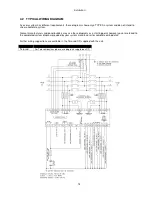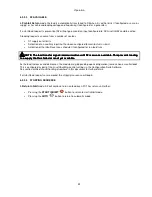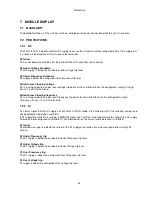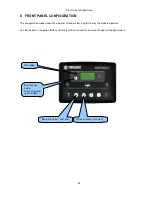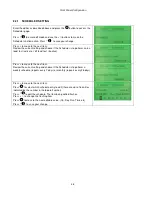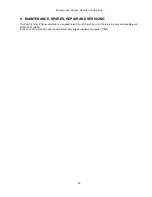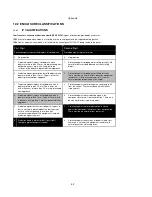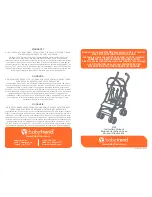
Operation
28
6.3.3
PROHIBIT RETURN
Activate by pressing the
MODE
‘
’
button repeatedly until
‘Prohibit Return’
is shown on the display, then press
the
TICK
‘
’
button to confirm the change. An LED indicator beside the button confirms this action.
The
‘Prohibit Return’
mode will prevent the load being transfer back to the S1 from the S2 supply until the module
is instructed to do so.
6.3.3.1
WAITING IN PROHIBIT RETURN
If a starting/loading request is made, the starting sequence will begin.
Starting/loading requests can be from the following sources:
•
S1 supply out of limits
•
Activation of an auxiliary input that has been configured to
remote start on load
or
remote start off load.
•
Activation of the inbuilt exercise scheduler.
•
Instruction from external remote telemetry devices using the RS232 or RS485 interface
6.3.3.2
STARTING SEQUENCE
To allow for ‘false’ start/load requests such as S1 brownouts, the
start delay
timer begins. There are individual start
delay timers for each of the different start/load request types.
Should all start/load requests be removed during the
start delay
timer, the unit will return to a stand-by state.
If a start/load request is still present at the end of the
start delay
timer, an output to give a start signal to an external
generator controller is activated (if S2 is configured as a generator).
If the generator fails to start during the ‘S2 Fail Delay’ timer, an alarm will appear on the display which shows
Fail to
Start.
S2 is seen as available once the supply is within limits (if configured as a mains supply) or had achieved
loading voltage and frequency (if configured as a generator).
If a start/load request is present but the starting sequence has not begun, an input configured to
‘Auto Start Inhibit’
could be active.


